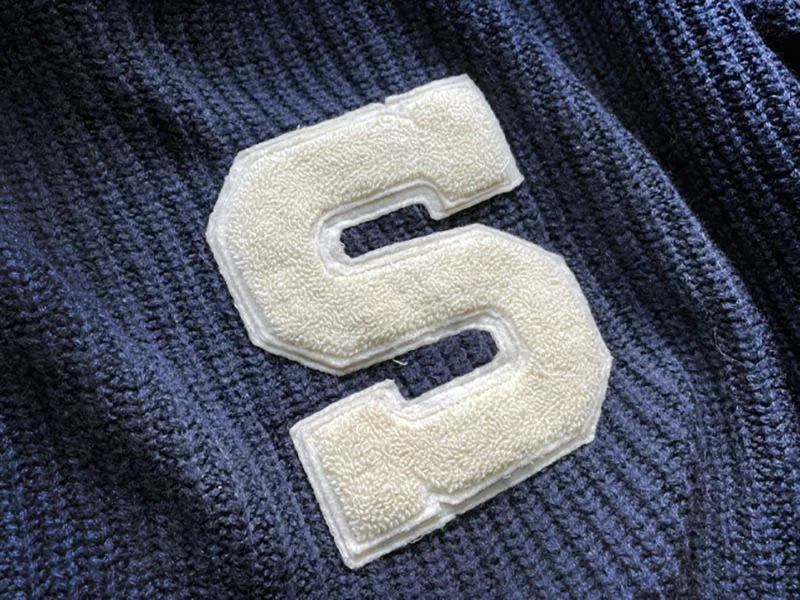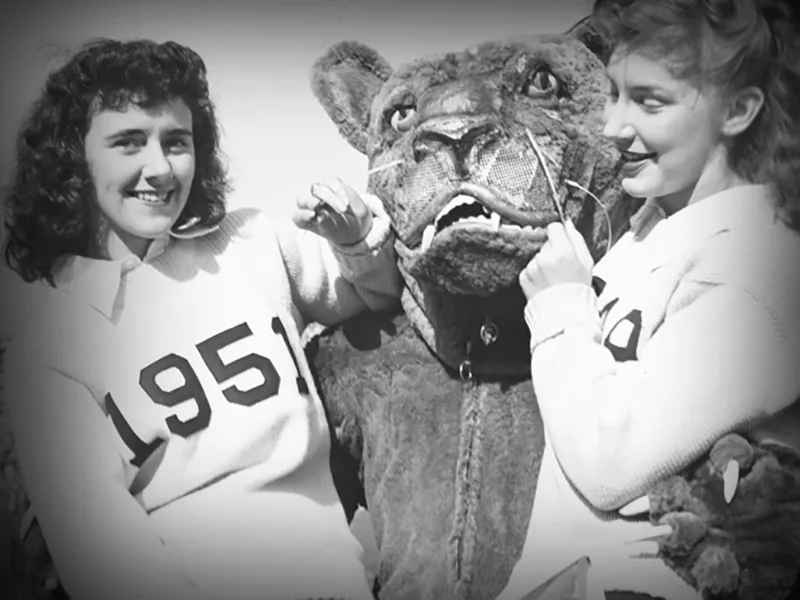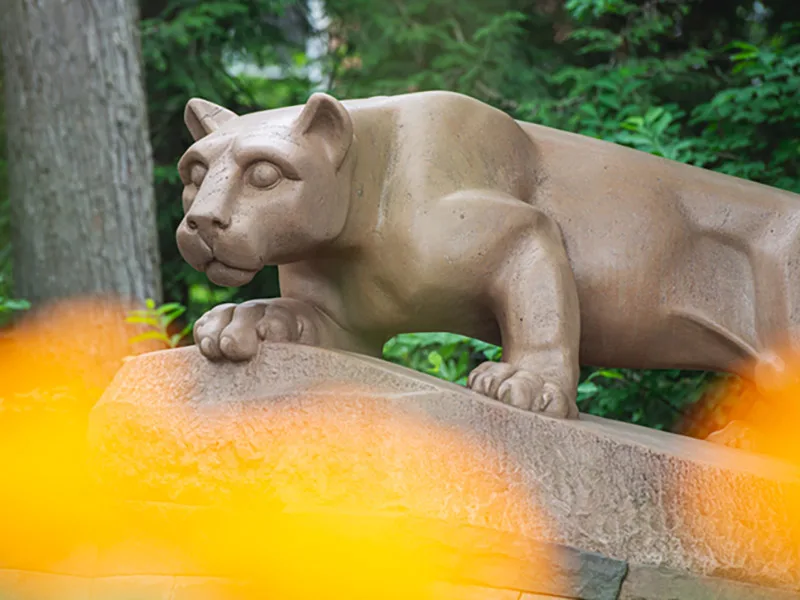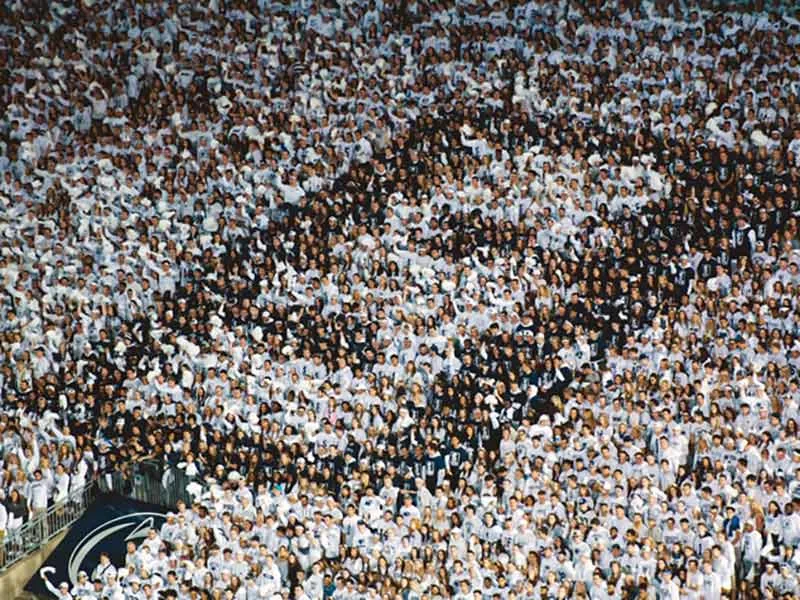
Penn State Traditions
Founded in 1855, Penn State has a long history of traditions and values that make up the fabric of who we are as a community.
'We Are Penn State' origins
On September 11, 1976, the words “We Are Penn State” were cheered for the first time in Beaver Stadium by University cheerleaders who were determined to fire up fans. While the phrase took some time to catch on, by 1981 the cheer had become a permanent part of the language of every Penn Stater.
As the cheer caught traction, a history-making story resurfaced. In 1946, the Penn State football team was set to play a segregated opponent. Penn State players refused to leave their Black players at home, unanimously voting to cancel the game. When the issue resurfaced the following season, captain Steve Suhey reputedly said there was no reason to call another vote because “we are Penn State.” That year, the entire team went on to play at the Cotton Bowl—a game that would become symbolic of desegregation in collegiate athletics.
Both stories encapsulate our pride, shared connection, and what it means to be part of the Penn State community.
Today, “We Are Penn State” can still be heard ringing through Beaver Stadium, welcoming freshman students, saluting new graduates, and used as a greeting when you spot a fellow Penn Stater.

Penn State's School Colors
The colors blue and white are fundamentally tied to our shared identity of being Penn Staters since adoption in 1890, representing our community’s pride and strong roots across Pennsylvania and beyond.
Penn State fanatics may also have a soft spot for pink and black, our original colors. The 1887 pairing make appearances in throwback jerseys and student section shirts, paying homage to the short-lived school colors.

Nittany Lion Mascot
Inspired by the mountain lions that once roamed the region, Penn State’s Nittany Lion mascot takes its name from a landmark near the University Park campus, Mount Nittany. For more than 100 years, the Nittany Lion has rallied the crowds at athletic events, welcomed students to campus, and cheered on Penn Staters everywhere.
Before the Nittany Lion, a mule named Old Coaly was held in high esteem by students, figuring into many colorful tales. While never an official mascot, Old Coaly was so beloved by students that his skeleton was preserved as a relic of Penn State’s past. Today, Old Coaly can still be greeted in the HUB-Robeson Center.

Nittany Lion Shrine
Carved from a 13-ton block of limestone, visiting the is a must during a campus visit. Artist Heinz Warneke crafted the monument over the summer of 1942, creating a timeless touchpoint for Penn Staters everywhere.
A tradition since the late 1960s, guarding the Nittany Lion Shrine during homecoming weekend is taken on by Lion Ambassadors and ROTC volunteers to protect the landmark from rival universities.
For the Glory: Penn State 'Alma Mater'
The starting line “For the glory of Old State” is a spirited phrase that beacons Penn Staters to sing along. Since composition in 1901 by Fred Lewis Pattee, singing along to "Alma Mater" has been a timeless tradition. Learn more about the origin of Penn State's alma mater.

The World's Best Student Section
Crowned as the best student section in college football, the electric energy in Beaver Stadium’s south end zone is unrivaled by any major athletic program.
Cheering on the Nittany Lions at a Penn State White Out game is a bucket list item for any sports fanatic. A crowd roughly 110,000 in size—and donned in white clothing—becomes one of the largest and loudest events in college athletics.

Blue Band
Recognized as one of the nation’s finest college marching bands, the Penn State Blue Band’s trademark drills and soaring instrumentals are unmistakable.
The Blue Band’s drum major and blue sapphire—our featured twirler—dazzle crowds and lead the band in formation. Our drum major's signature move is a running forward flip, a long-standing tradition unique to Penn State, that makes those watching hold their breath, then roar with cheers.

The Largest Student-Run Philanthropy in the World
Penn State THON, a 46-hour dance marathon, is a year-long fundraising effort for Four Diamonds to support children and families impacted by pediatric cancer.
Committed to covering patient medical bills and pediatric cancer research, more than $200 million has supported 4,800 families since the first event in 1973.
